Dropfleet Commander is one of the easiest games to get into on the market, thanks to the excellent starter sets that give you everything you need to build your first fleet and hit the table in style. This week, we’re looking at the forces of the UCM, the ships purpose-built to take back humanity’s homeworld from the alien Scourge in the grand Reconquest. However, even the relatively simple starter sets have a lot of options to choose from, so we’re here to get you pointed in the right direction.
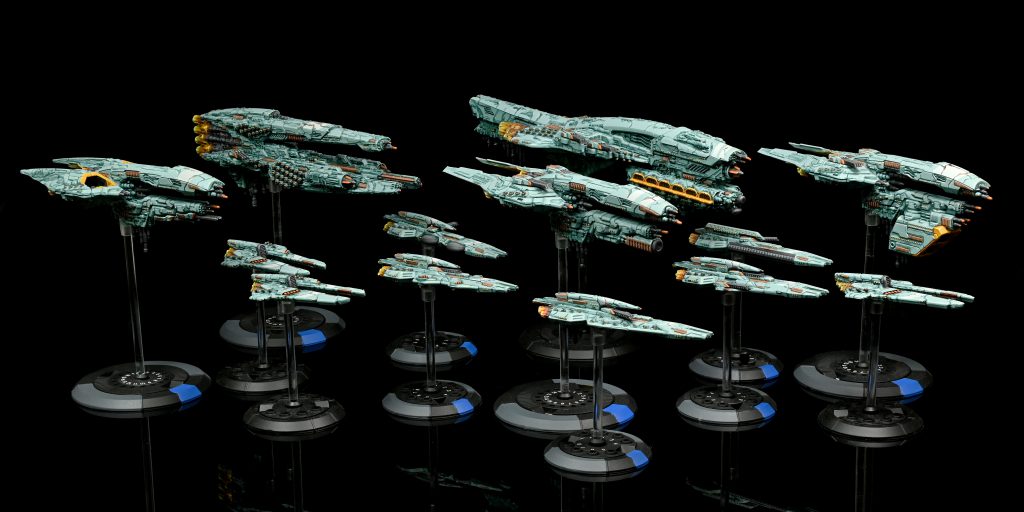
One quick disclaimer before we get started: the articles in our Getting Started series aren’t intended as the be-all-end-all of how to play a given faction. Instead, we’re going to look at how to get started with the ships in your starter set, and some recommendations for where to look next as you start building a larger fleet.
Building Your Starter Set
The UCM starter fleet offers a similar fleet disposition to each of the other factions’ starters: 3 UCM Cruiser sprues, each building a single cruiser in your choice of nine loadouts, and a single UCM Frigate sprue which will let you build 4 frigates in one of five configurations, though you’ll only be able to build 2 of each loadout you choose.
The Recommended Fleet
- 1x Moscow Heavy Cruiser
- 1x Berlin Cruiser
- 1x Seattle Fleet Carrier
- 2x Toulon Frigate
- 2x New Orleans Strike Carrier
This is honestly probably one of the better options for a UCM fleet given this disposition, though you could make the case that the cruiser loadouts might not be the best future-proofed. The Moscow brings about as much beef as you can fit in a list this size, together with a respectable number of mass drivers which allow it to deal some reasonable damage in close. The Berlin’s Burnthrough (6) laser is great at longer ranges, but its F(N) arc holds it back in close. Thankfully, it has a pair of mass drivers as a backup, but they’re only hitting on 4+, so don’t rely on them. And between its 3 wings of fighters and bombers and its 4-shot 3+ lock mass drivers, the Seattle can present a deceptively potent offensive threat, especially if you’re able to knock out any launch assets your opponent thought to bring before things heat up.
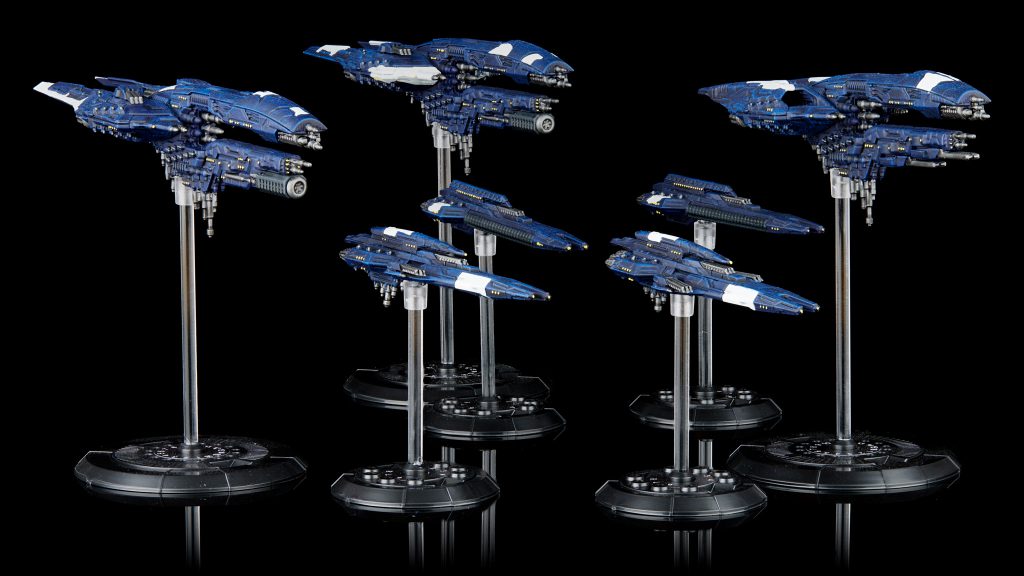
For the frigates, the pair of New Orleans is basically mandatory at this game size and will more or less stay that way as you continue to build. The Toulons are a little weird with only two of them since they can’t get any punch out of their Squadron (3) rule, but 6 mass driver shots for 70 points isn’t completely terrible, even if they’re only hitting on 4+. If you want to build a pair of frigates that are punching at their full weight out of the gate, look at the Taipei Missile Frigate: it packs d6+4 close action shots on a 10” thrust chassis, giving a pair of them a decent chance to overwhelm the point defense of whatever your opponent managed to cobble together out of their starter. Just keep in mind that they’re fragile and have to get close to use their main weapons, so putting them on Active Scan is a bit more of a risk than it can be for the Toulons.
UCM 101: Playing Your Starter Fleet
The starter fleet’s gameplan is similar to the UCM’s strategy in general: use a combination of launch assets and Burnthrough lasers backed up with Active Scan orders to put damage on one or two key targets early, then pour on the mass drivers to finish them off and hope that your decent defensive stats pull you through. It’s not a subtle strategy, and if you pick the wrong target early you’ll find yourself in a rough spot, but if you’re smart about it you can make it work.
As ever, your ultimate goal here is to win the drop race. You’ve got two key tools here for this: the New Orleans, which are your only source of drop in the list, and the Moscow, whose relatively high number of mass driver shots stand the best chance of dealing damage to enemy ground assets or strike carriers hiding in orbit. Speaking of, don’t be afraid to hide the New Orleans in atmosphere if there’s a larger enemy ship nearby, and consider saving the Seattle’s fighter wings to add some extra point defense to the Moscow if your opponent has a carrier or two.
You’ll generally want to start the game by pressing forward with the New Orleans toward a couple of closer objectives. Try to position them so that you can move from one objective to another as quickly as possible. When the opportunity presents itself, put one of your Toulons on Active Scan to add a minor spike to a key enemy ship so that your Berlin can start pumping out laser shots, then follow up with mass driver shots from your other cruisers.
Expanding On Your Starter Set
As you expand your fleet towards 1250 points and beyond, there are a few things that are more or less mandatory. First on the list is the San Francisco Troopship. While it’s not heavily armed, it’s reasonably durable and packs a pair of bulk landers, allowing you to lock down key areas and make it that much harder for your opponent to displace you. Offensively, look to build a pair of New Cairo Light Cruisers – they may not be that tough compared to the rest of your fleet, but they’re as quick as your frigates and between them can fire two Burnthrough (6) lasers without needing to go Weapons Free. Use these to soften up a key target on the approach so your mass drivers can clean up.
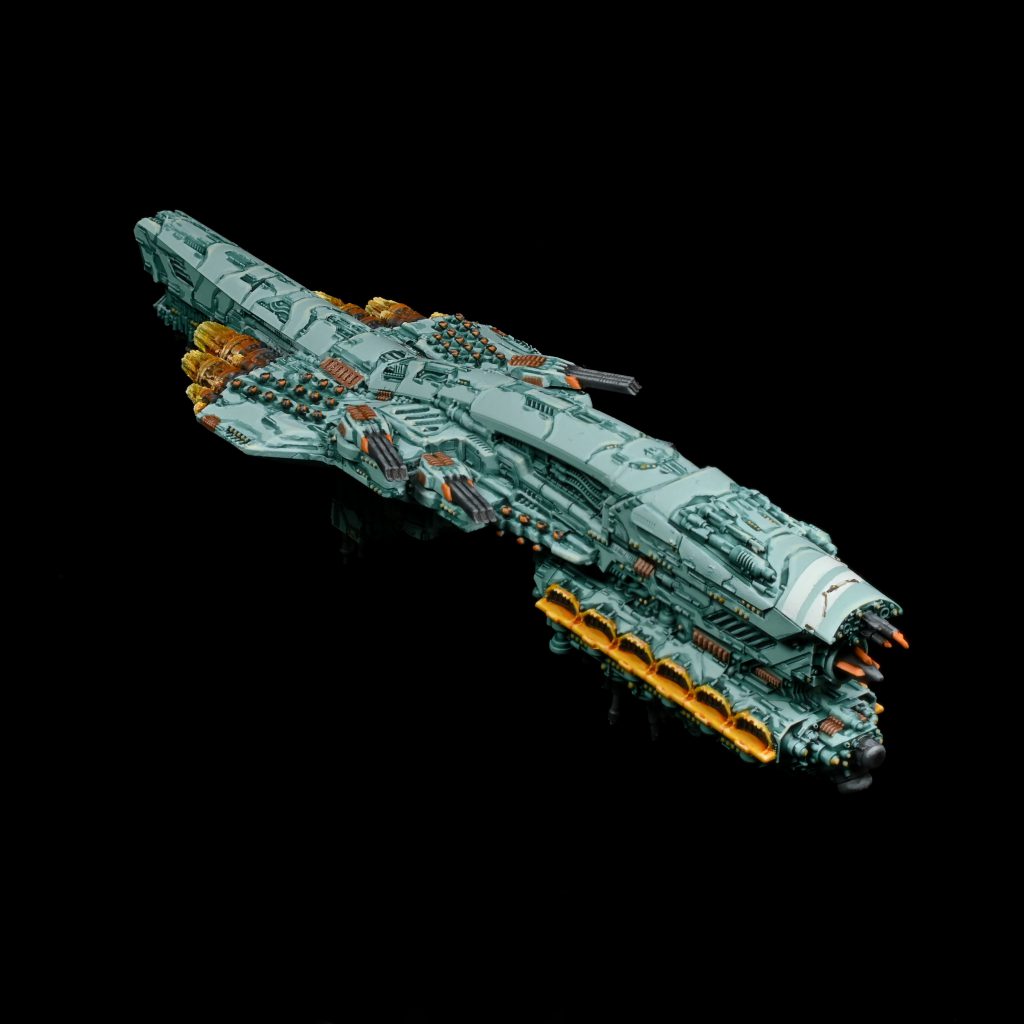
If you want to pick up a bigger ship (and who doesn’t?), the Johannesburg Battlecruiser is a decent pick. It’s got the mass driver loadout of a Moscow with the launch assets of a Seattle, and adds a few extra hull points besides. And if you’re looking to go even bigger, consider the New York Battleship. Its mass drivers may not be impressive (though with 8 shots they’re still nothing to sneeze at), but between its 7 wings and pair of torpedoes, it can pose a serious threat from a decent range even if its target isn’t running a major spike.
For smaller ships, another frigate sprue or two will go a long way. In addition to filling out the group of Toulons or Taipeis you built from your starter, you’ll also want to look at building a couple of Jakartas or Limas. The Jakarta Aegis Frigate is an excellent source of point defense for your fleet, helping you keep pesky bombers away from key pieces without having to spend your launch assets on a fighter screen. The Lima, on the other hand, is a Detector, which allows it to go on Active Scan orders even if its battlegroup is doing something else. It’s a great little ship to slot into a battlegroup with something that wants to go Weapons Free so you can add an extra 6” to your effective range and blast your target when they’re not quite ready for it.
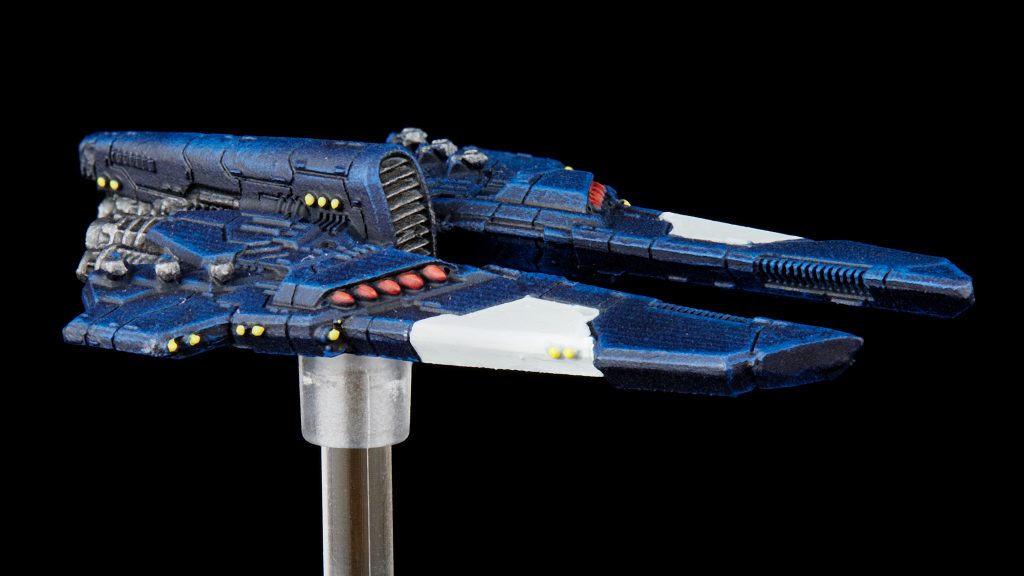
Finally, UCM fleets have access to some great tools for hunting strike carriers in atmosphere or bombarding ground assets from low orbit. For the former, Santiago Corvettes are fast, cheap, and pack a hell of a punch if they can close with a smaller target, and the Kiev Heavy Destroyer has a 2-shot 2-damage mass driver that makes it nearly as much of a threat to capital ships on Weapons Free with the Fusillade-1 rule as it is to smaller ships cowering in atmosphere thanks to its Re-Entry rule.
On the other hand, if you’d rather just shoot whatever ground assets your opponent has managed to deploy, look no further than the Madrid. At 79 points, its 6-shot 2+ lock bombardment turrets are a great value, and can really help soften up an enemy cluster so your strike carriers can turn the tide. If you’re looking for something in a different size category, the Istanbul Monitor combines a 10” scan range with a decent little mass driver that can flex into a particularly nasty bombardment weapon if needed, while the Tokyo Battleship packs double the Madrid’s armament and a Burnthrough (6) laser to boot for 220 points.
Tips and Tricks
Focus fire. While none of your ships are particularly powerful on their own, you’ll have a much easier time than most factions bringing most (if not all) of your weapons to bear on on a single target. Use that to your advantage and pour on the fire to try to rack up a kill or two in the first few rounds. Remember: a crippled ship can still shoot back, but a dead ship is just that: dead.
While the UCM fleet as a whole may not specialize in any particular range or style of combat, several of your key ships are very specialized. One example is your troopship, the San Francisco: while it packs a pair of bulk landers, its offensive weapons aren’t great. While this sounds like all downside at first, there is a bit of a silver lining here – you don’t have to commit the thing to combat to get what you paid for out of it. Unlike PHR and Resistance fleets, who can often feel like they ought to commit their troopships to the fight, you’re not going to feel that compulsion. As a result, you can afford to play a little more conservatively with your landers, skirting around the edges of the firefight and only committing them to places you really need them.
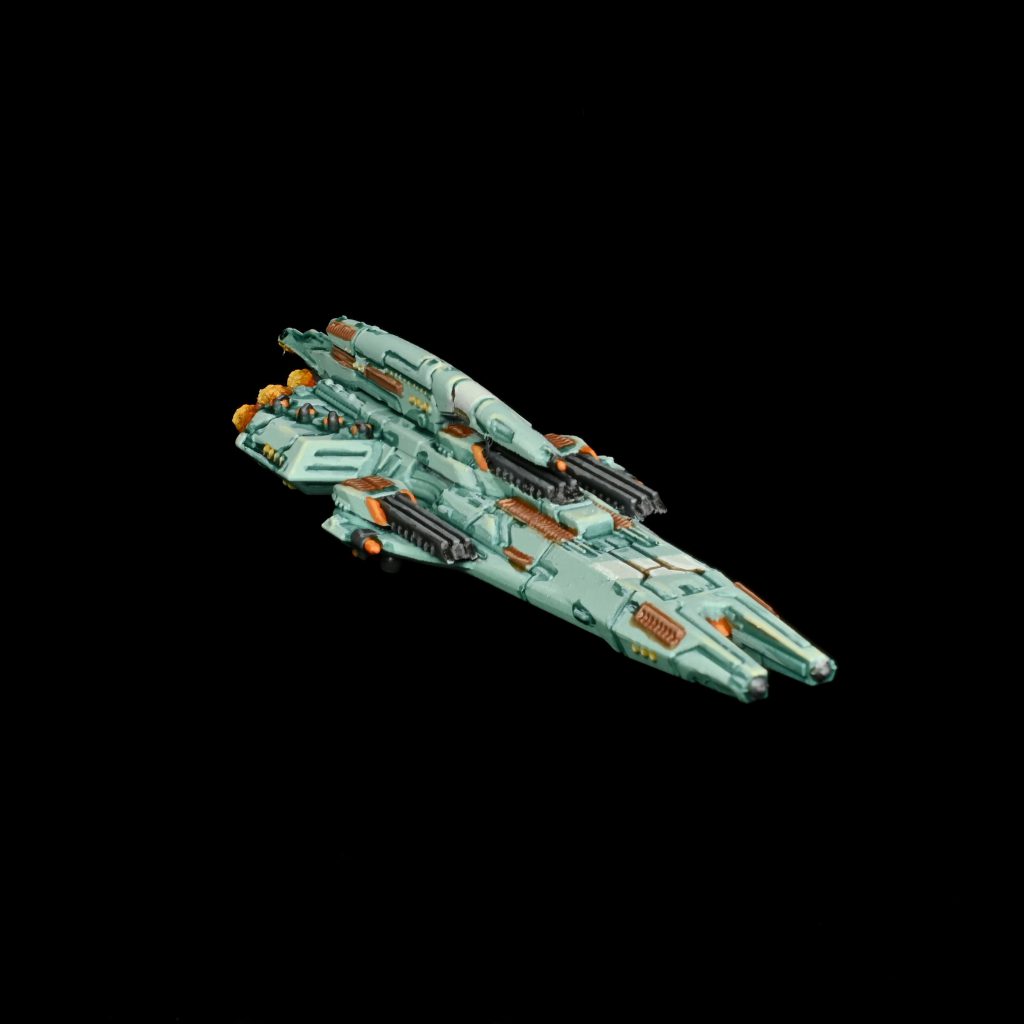
Finally, take the time to look at the ships your opponent has on the battlefield when you’re figuring out how you’re going to approach the battle. The fact that your fleet doesn’t really specialize in anything is a double-edged sword: while you’re not going to be able to go toe-to-toe with your opponent on their own terms, you have the tools needed to attack them from outside their comfort zone. You’ll need to use that to your advantage if you want to win.
The Reconquest Marches On
The UCM definitely aren’t the easiest faction in the game to play, but they have a wide variety of options that can be a ton of fun to play. But not only are they fun to play, they’re also a blast to paint. To that end, come back in two weeks’ time when we’ll be looking at how to paint UCM ships.


